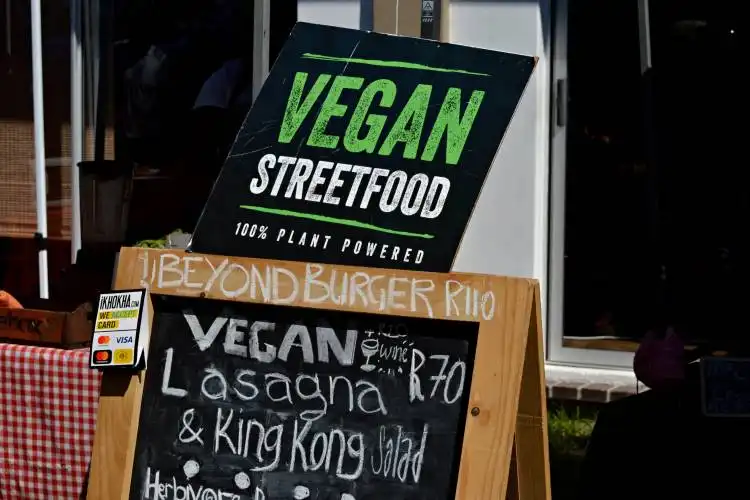

Kickstart a business that'll make parents sing lullabies of joy - a Baby Food Business! It's like opening a five-star restaurant but your cute, little diners are on highchairs! You'll be whipping up wholesome, nutritious meals for tiny tots, ensuring their first bites are the tastiest and healthiest. Your venture essentially crafts, sells, and sometimes delivers tantalizing toddler meals, making parents breathe a sigh of relief, knowing their little one's nutrition is in safe, caring hands.



Unlock the door to your online success with our hand-picked selection of premium domain names. Whether you're starting a new venture or rebranding an existing one, the right domain can set the tone for your digital presence. Browse through our curated list, each with its unique potential to enhance your brand's visibility and credibility.
This a quick reality check to help you identify the strengths and weaknesses of your business concept before you dive in.
Please note these are generalized estimates and can vary significantly based on location, brand prestige, and other factors. Always get advice from a business consultant or financial advisor for personalized advice.




Before you get caught up in the whirlwind of setting up your business, invest in a domain name. It's a small but significant step that lays the foundation for your brand and makes it easier for customers to find and trust you. Just like you wouldn't build a house without securing the land first, don't build a business without securing your domain name.
"Why? Can't that wait?" Here's why it shouldn't
Starting a baby food business requires a significant investment of both time and money. Before deciding to start a business, it is important to understand the costs associated with it. Start-up costs typically include the cost of equipment, such as a blender, food processor, and packaging materials. Additionally, you may need to purchase ingredients, such as fruits, vegetables, and grains. Depending on the size of your business, you may also need to rent or purchase a commercial kitchen space. Finally, you may need to invest in marketing materials and advertising to get the word out about your business.
Once your business is up and running, there are certain ongoing expenses that you will need to consider. These expenses include the cost of ingredients, packaging materials, and labor. Additionally, you may need to invest in marketing and advertising to keep your business visible to potential customers. Additionally, you may need to pay for insurance to protect your business from any potential liabilities.
There are a variety of ways to make money with a baby food business. One option is to sell your products directly to consumers. You can do this through online sales, at farmers markets, or through retail stores. Additionally, you can partner with restaurants or catering companies to provide them with your products. Finally, you can also offer meal delivery services, where you deliver freshly prepared meals to customers.
Choosing the right name for your baby food business is an important step in the process. It is important to choose a name that is memorable, easy to pronounce, and that conveys the message of your business. Consider using words that are related to the baby food industry, such as “nourish” or “nurture”. You may also want to consider using a play on words or a pun to make your business name stand out. Additionally, be sure to check if the name you are considering is already being used by another business.
Once you have chosen a name for your baby food business, you will need to register it with your local government. This process can vary depending on where you live, so it is important to research the requirements in your area. Generally, you will need to file a “Doing Business As” (DBA) form with your local government. This will allow you to legally operate under the name you have chosen. Additionally, you may need to register your business name with the state or federal government, depending on the type of business you are running. Be sure to check with your local government to find out what is required in your area.
Creating a business plan is an important step in starting a baby food business. The business plan should include an executive summary, a description of the business, a market analysis, a description of the products and services, an operations plan, a financial plan, and a management plan. The executive summary should provide a brief overview of the business and its goals. The description of the business should include the legal structure of the business, the location of the business, and the mission statement. The market analysis should include an analysis of the target market, the competition, and the pricing strategy. The description of the products and services should include a list of the products and services offered, the ingredients used, and the packaging. The operations plan should include a description of the production process and the distribution channels. The financial plan should include a budget, a cash flow statement, and a break-even analysis. The management plan should include a description of the management team and their roles.
When writing a business plan for a baby food business, it is important to be detailed and thorough. Make sure to include all of the necessary information and to be realistic about the goals and objectives of the business. It is also important to include a timeline for each of the steps in the business plan. Additionally, make sure to include a marketing strategy and a plan for how the business will be promoted. Finally, make sure to include a section on how the business will measure success.
When starting a baby food business, there are a variety of financing sources available to help get the business off the ground. These sources include traditional bank loans, venture capital, private investors, and crowdfunding. Each of these sources has its own advantages and disadvantages and should be carefully researched to determine which is the best fit for the business.
When seeking financing for a baby food business, it is important to have a well-thought-out business plan that outlines the business’s goals, objectives, and strategies. It is also important to have a clear understanding of the startup costs and ongoing expenses associated with the business. Having a solid understanding of the market and potential customer base will also help when seeking financing. Additionally, it is important to have a strong team of advisors and mentors to provide guidance and advice throughout the process. Finally, it is important to be prepared to answer questions about the business and to be able to demonstrate the potential for success.
Depending on the state, there are a variety of licenses and permits needed to start a baby food business. These can include a business license, food service license, food handler’s permit, and a health department permit. It is important to research the specific requirements for the state in which the business will be located. Additionally, if the business will be selling products online, a sales tax permit may be necessary.
Before starting the process of obtaining licenses and permits, it is important to know the specific requirements for the state in which the business will be located. Additionally, it is important to be aware of any deadlines for submitting applications and fees. It is also beneficial to contact the local health department to gain an understanding of the process and any additional requirements. Furthermore, it is important to keep copies of all applications, permits, and licenses in a safe place. Finally, it is important to review the permits and licenses regularly to ensure they are up to date.
When choosing a location for a baby food business, it is important to consider the demographics of the area. It is also important to consider the competition in the area. If there are already several baby food businesses in the area, it may be difficult to compete. Additionally, it is important to consider the size of the location and the cost of the rent. It is important to make sure that the size of the location is suitable for the business and that the rent is affordable.
When negotiating a lease for a baby food business, it is important to consider the length of the lease. It is also important to consider the terms of the lease. It is important to make sure that the terms of the lease are fair and reasonable. Additionally, it is important to make sure that the lease includes provisions for any necessary repairs or upgrades to the property. Finally, it is important to make sure that the lease includes a clause that allows for the business to terminate the lease if necessary.
Starting a baby food business requires certain equipment and supplies. Depending on the type of business you are starting, you may need a commercial kitchen, food processor, blenders, strainers, thermometers, storage containers, and other kitchen tools. You will also need to purchase packaging materials, such as labels, jars, and containers. Additionally, you may need to purchase marketing materials, such as business cards, flyers, and brochures.
When purchasing equipment and supplies for your baby food business, it is important to shop around for the best prices. Compare prices online and in stores to get the best deal. Additionally, you may be able to find used equipment and supplies that are in good condition. This can help you save money while still getting the supplies you need. It is also important to make sure that the equipment and supplies you purchase are safe and meet all health and safety regulations. Finally, make sure to purchase enough supplies to meet the demands of your business.
Developing a marketing plan is essential for any business, and a baby food business is no exception. To create a successful plan, you should consider the target market, the competition, and the resources available to you. Additionally, you should consider the budget you have available for marketing and advertising. Once you have identified these factors, you can create a plan that will help you reach your goals.
There are a variety of marketing strategies you can use to promote your baby food business. Social media is a great way to reach potential customers and build a following. You can also use email marketing to reach out to customers and offer discounts and promotions. Additionally, you can use traditional methods such as print advertising and radio spots to reach a wider audience. Finally, you can also consider attending local events and trade shows to promote your business.
Before launching your business, it is important to create a marketing plan that outlines how you will reach your target audience. This plan should include a budget for advertising, a timeline for launching, and a strategy for creating a buzz around your business. Additionally, it is important to create a website for your business that is easy to navigate and includes information about your products and services. You should also consider creating social media accounts for your business and engaging with potential customers online.
After launching your business, it is important to focus on growing your customer base. This can be done by offering discounts and promotions, attending local events, and networking with other businesses in the industry. Additionally, you should consider creating content such as blog posts and videos to engage with potential customers and build brand awareness. You should also focus on providing excellent customer service to ensure that customers have a positive experience with your business. Finally, it is important to keep track of your finances and make sure that you are staying within your budget.